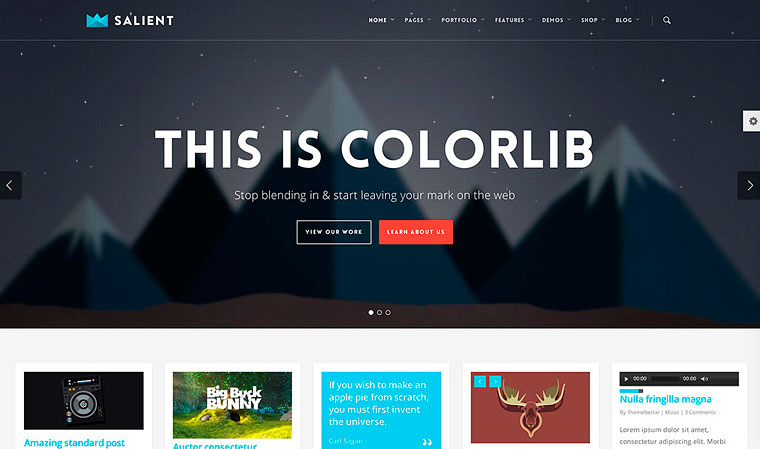Comprehending User Experience: Trick Principles for Effective Web Layout
In the realm of web layout, recognizing customer experience (UX) is critical to creating platforms that not only draw in however additionally preserve users. Secret concepts such as user-friendly navigating and reliable feedback systems play crucial roles in fostering user satisfaction. Additionally, factors to consider for ease of access make certain that all individuals can involve with the content perfectly.
Relevance of Individual Experience

In the world of internet layout, one can not take too lightly the relevance of individual experience (UX) as a critical aspect that directly affects the success of a web site. A positive UX not just boosts user fulfillment however also cultivates commitment, motivating repeat sees and interactions. When individuals experience a interesting and user-friendly interface, they are most likely to check out the content, exchange clients, or share their experiences with others. This organic promo can substantially magnify a brand's reach and visibility.
Additionally, the importance of UX prolongs beyond simple visual appeals. It incorporates the overall capability of a website, making certain that navigation is smooth and information is quickly obtainable. Sites that focus on UX are frequently viewed as even more trustworthy and legitimate, which can have a profound effect on conversion prices. In comparison, poor UX can cause disappointment, causing high bounce rates and lost chances.
Eventually, purchasing individual experience is not simply a layout choice; it is a strategic decision that can distinguish a brand name in a jampacked industry. By concentrating on UX, businesses can create meaningful interactions that resonate with individuals, leading the way for sustained success in the digital landscape.
Functionality Principles
Reliable website design pivots on the application of essential functionality concepts that make certain a website is both straightforward and functional. Central to these principles is the principle of intuitiveness, where users can browse the site effortlessly without substantial direction. Clear navigation structures, consisting of well-labeled menus and regular formats, boost this instinctive experience, enabling users to situate info swiftly.

Uniformity is just as essential; keeping harmony in layout components, terminology, and procedures across the website assists to reduce confusion. Customers need to not need to relearn exactly how to interact with various areas of the web site.
Furthermore, error prevention and recuperation are essential for use. Internet sites must be created to reduce the possibility of user mistakes, and when errors occur, positive and clear mistake messages should direct users in the direction of resolution.
Access Considerations
Ensuring accessibility in internet layout is extremely important for developing comprehensive electronic experiences that accommodate all individuals, including those with disabilities. Access factors to consider involve developing websites that accommodate diverse needs, allowing individuals with visual, auditory, cognitive, or motor disabilities to navigate and interact effectively.
To attain this, web developers ought to comply with developed guidelines, such as the Web Material Access Standards (WCAG) These guidelines provide a structure for making content perceivable, operable, easy to understand, and robust. Key methods consist of guaranteeing sufficient color comparison, offering message choices for non-text material, and making certain keyboard navigability.
Furthermore, semantic HTML should be made use of to enhance display reader compatibility, permitting customers with visual problems to comprehend the framework and meaning of web content without effort. web design. Supplying clear, concise directions and making Homepage use of uncomplicated language can additionally improve usability for people with cognitive specials needs
Regular accessibility screening, involving actual individuals with handicaps, is necessary to identify obstacles and enhance the individual experience. By focusing on availability, internet developers not just abide by lawful requirements however likewise promote a more equitable digital landscape, inevitably profiting everybody with improved usability and engagement.
Visual Layout Aspects
A myriad of aesthetic layout components plays a vital function fit customer assumptions and experiences on a web site. These aspects include shade systems, typography, images, whitespace, and design, each adding to the overall aesthetic charm and effectiveness of a website.

Color design evoke feelings and can affect individual actions; for example, cozy shades may create a feeling of necessity, while trendy shades commonly advertise calmness. Typography, on the other hand, influences readability and can establish a brand's individuality - web design. The option of font style and size have to line up with the site's objectives and target market
Images, consisting of symbols and pictures, enhances narration and can substantially affect individual involvement. Top notch visuals produce a feeling of professionalism, while poor-quality photos might interfere with the customer experience.
Design and whitespace are similarly important, as they guide customers with the content. Learn More Here A well-structured format assists individuals find details swiftly, while sufficient whitespace avoids clutter, helping with a much more delightful surfing experience.

Testing and Iteration
User screening and model are basic parts of an effective website design process. These practices enable designers to gather useful responses from real users, guaranteeing that the end product fulfills their assumptions and requirements. Customer screening includes observing exactly how actual users communicate with a web site, determining use issues, and comprehending customer actions. This straight responses is essential in revealing discomfort points that might not appear during the design stage.
Model, on the various other hand, is the procedure of refining the design based upon the understandings obtained from user testing. By making incremental modifications and re-evaluating the layout, teams can enhance performance, enhance aesthetic appeals, and maximize customer engagement. This cyclical method promotes a culture of constant enhancement, permitting developers to adjust to customer needs and emerging trends successfully.
Additionally, incorporating both customer screening and model into the design process results in more enlightened decision-making and inevitably causes an extra user-centered item. By welcoming these concepts, internet developers can develop extra instinctive, engaging, and reliable experiences that reverberate with their target audience, ultimately driving higher user fulfillment and retention.
Verdict
Finally, individual experience is an important element of efficient website design, including functionality, availability, and aesthetic factors to consider. Abiding by recognized principles enhances customer fulfillment and interaction, promoting a more comprehensive on the internet environment. Continual screening and iteration work as crucial processes for attending to and identifying user discomfort points, ensuring that internet designs continue to be versatile to developing demands. By prioritizing these elements, internet designers can develop interfaces that not just satisfy customer expectations but likewise promote long-term connections.
In the realm of web style, recognizing user experience (UX) is vital to creating platforms that not only bring in but likewise maintain users.In the realm of internet layout, one can not ignore the relevance of customer experience (UX) as a pivotal aspect that straight affects the success of a site. Individual screening includes observing just how real users communicate with a web site, recognizing usability visit this website issues, and understanding user habits.In verdict, customer experience is a crucial component of reliable internet layout, incorporating use, accessibility, and aesthetic considerations. Continuous testing and iteration serve as important processes for determining and attending to customer discomfort factors, making sure that web designs remain adaptable to evolving needs.